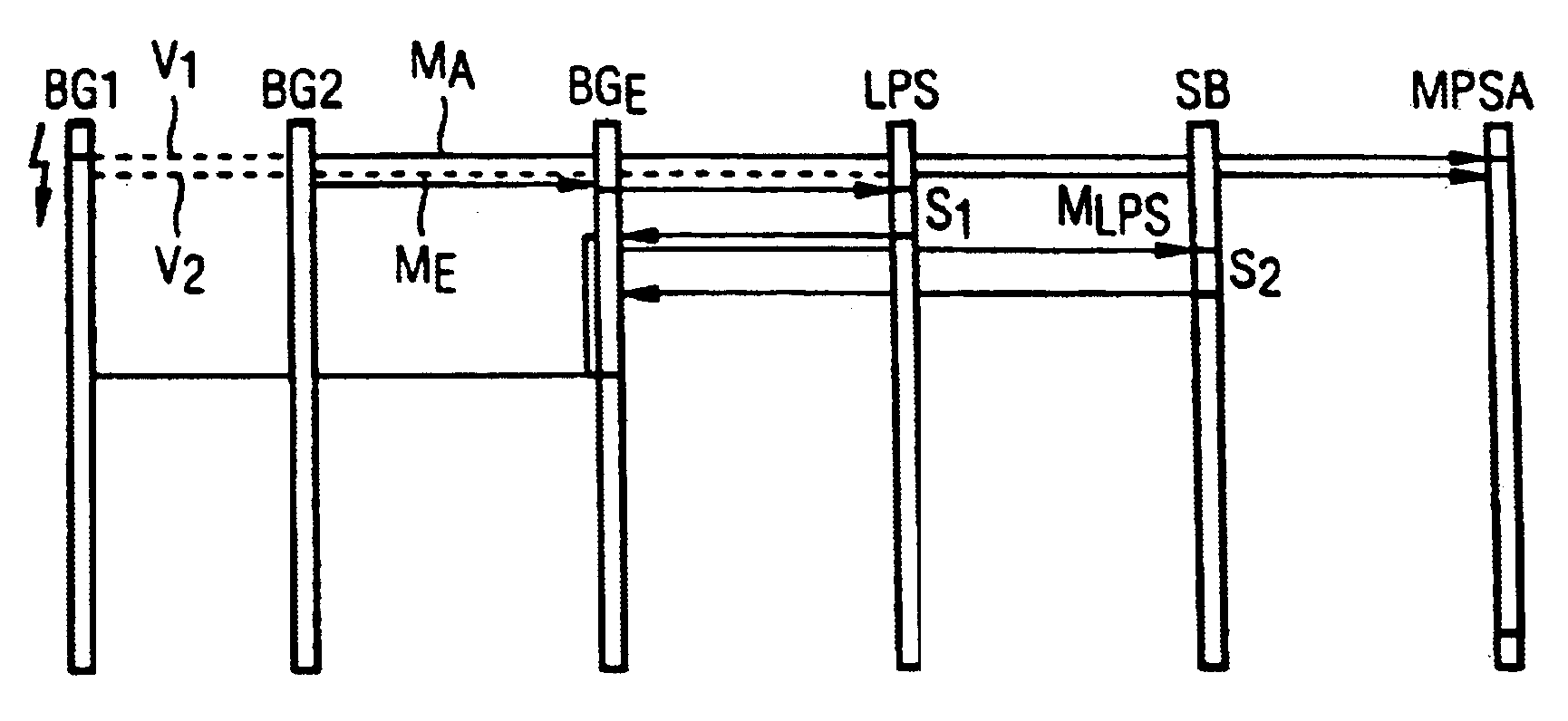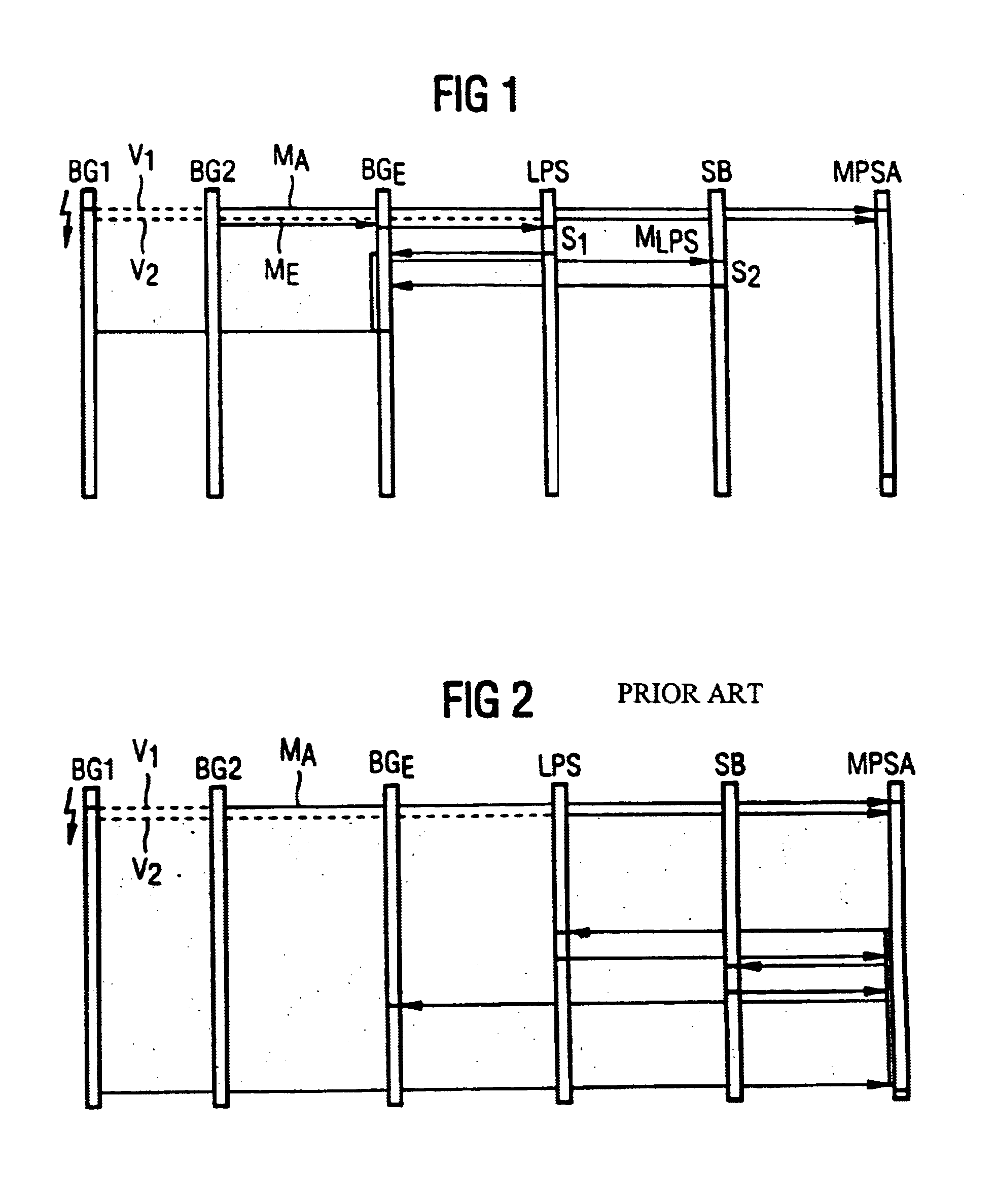Method for equivalently connecting subassemblies in 1:N redundancy
a technology of standby circuit and subassembly, applied in the field of standby circuit implementation of assemblies in 1 : n redundancy, can solve the problems of configuration running counter, loss of system dynamics, loss of more valuable time, etc., and achieve the effect of faster and more efficien
- Summary
- Abstract
- Description
- Claims
- Application Information
AI Technical Summary
Benefits of technology
Problems solved by technology
Method used
Image
Examples
Embodiment Construction
[0020]FIG. 1 shows a configuration on which the inventive method is run in which peripheral line assemblies BG1 . . . BGn are provided, (only two of these peripheral line assemblies BG1, BG2 are shown). The two assemblies are respectively allocated to one another in pairs and comprise connections V1 to one another via which a mutual monitoring is carried out. Further, internal and external interfaces are allocated to the peripheral line assemblies BG1 . . . BGn. The internal interfaces serve as interfaces the assemblies AMX of the ATM switching network, whereas the external interfaces represent interfaces to the connected trunks hereto for the other switching network devices. The assemblies BG1 . . . BG2 also comprise connections V2 to the assemblies AMX of the ATM switching network, (only the connection V2 of the assemblies BG1 to the assemblies AMX is shown here). All assemblies BG1 . . . BGn as well as the allocated internal and external interfaces are monitored and controlled by...
PUM
 Login to View More
Login to View More Abstract
Description
Claims
Application Information
 Login to View More
Login to View More - R&D
- Intellectual Property
- Life Sciences
- Materials
- Tech Scout
- Unparalleled Data Quality
- Higher Quality Content
- 60% Fewer Hallucinations
Browse by: Latest US Patents, China's latest patents, Technical Efficacy Thesaurus, Application Domain, Technology Topic, Popular Technical Reports.
© 2025 PatSnap. All rights reserved.Legal|Privacy policy|Modern Slavery Act Transparency Statement|Sitemap|About US| Contact US: help@patsnap.com


